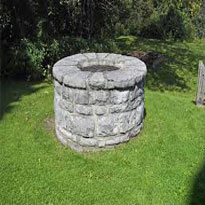
This is far from the end of the road, however. The proposed regulation must go through a public comment period and a hearing which will probably take at least 12 months before it becomes final.
We agree with the Delaware Riverkeeper Network that this decision is “great news”.
We hope that the DEP will also follow the DWQI’s recommendation of an MCL of 14 for PFOA.
The PFNA problem is particularly acute in South Jersey where it has been found in the drinking water supplies of Woodbury, Logan, East Greenwich, Greenwich, Deptford and West Deptford townships as well as well as Paulsboro, which has the highest recorded level of PFNA (150 ppt) in the western world. Residents of Paulsboro have obtained relief through a class action settlement. The local municipalities have found ways to reduce the PFNA in their water supply either through changing the blend on their wells or arranging for carbon filtration. Dozens of private well owners have also learned their wells have been contaminated with PFNA. Although many have been provided with carbon filtration for their private well, it offers a cumbersome, inconvenient and unreliable solution to the problem of ongoing contamination. The best solution, connection to a clean public water supply, still eludes all of these homeowners.

